
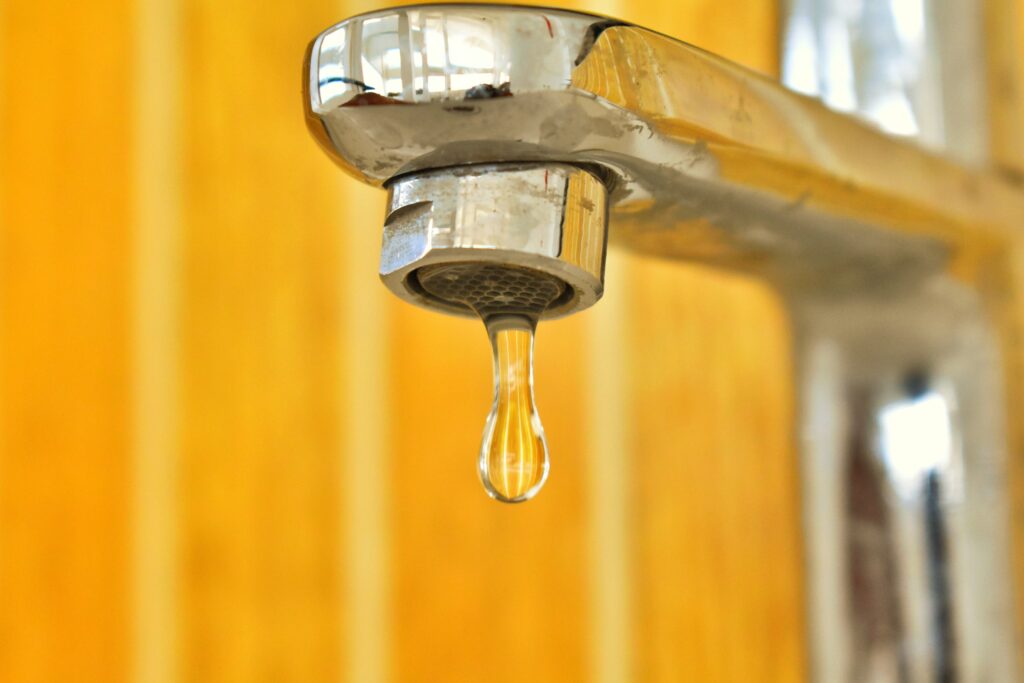
Caribbean Twitter users continue to dispute a report that ranked the region among ‘dangerous’ countries having drinking water ‘unsafe’ for human consumption.
Popular page UberFacts, whose potable water safety rankings went viral on Friday (March 17), triggered collective shock as only countries from Europe and North America dominated nearly all of the top 30 places.
The ranking was first presented in a March 8 Worrying Waters article by Leicester-based plumbing company QS Supplies Limited.
According to its methodology disclaimer, QS Supplies sourced country scores from Yale University’s Environmental Performance Index in arriving at the ‘water hierarchy’.
“The index assigns each country a score that rates the quality of local drinking water based on the number of age-standardised, disability-adjusted life-years lost per 100,000 persons due to exposure to unsafe drinking water. Higher scores indicate safer drinking water,” the firm explained.
Also utilising guidance from the US Centers for Disease Control and Prevention (CDC), the ranking is visualised on a macro level, showing countries where water is ‘safe’ to drink in blue and designating ‘unsafe’ territories in brown. Countries were coloured grey where no data was readily available.
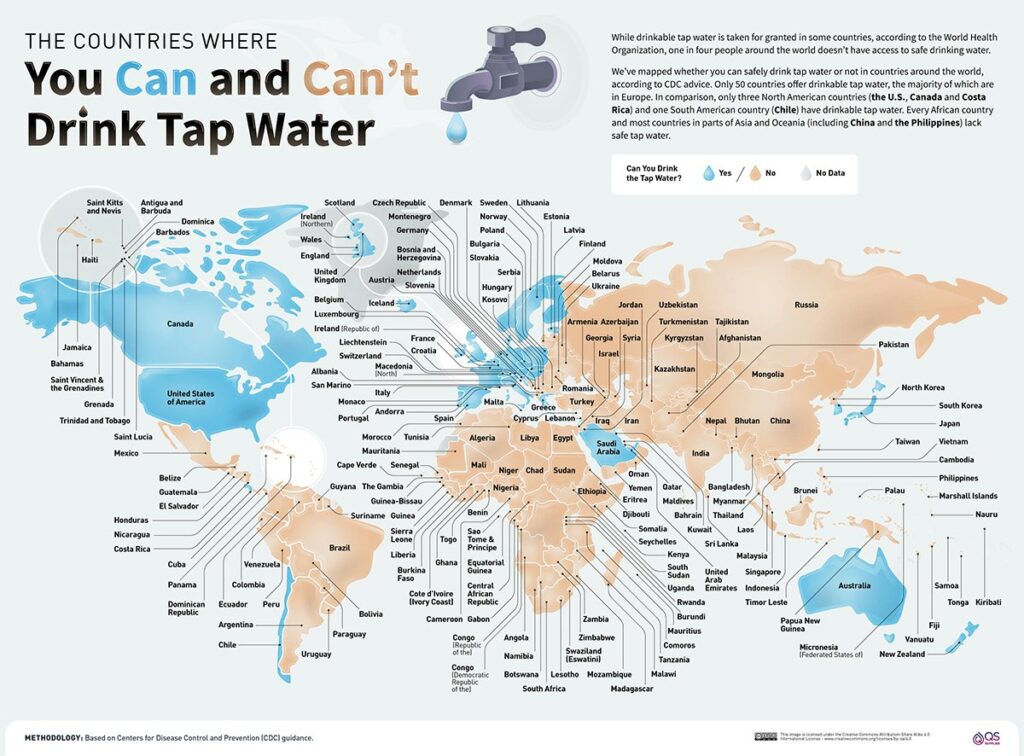
A perfect 100 was the best possible score, while countries were ranked ‘safe’ for a total equalling 50 or higher.
Austria topped the global ranking while Yemen was considered the country with the most dangerous tap water, unfit for drinking.
Best-place Chile and Costa Rica both received a ‘safe’ score from QS Supplies’ ranking alongside Argentina and Uruguay as Latin American countries, though both Río de la Plata neighbours’ tap water was labelled ‘unsafe’.
See full breakdown of regional placings below:
| Country | Score (out of 100) | Tap water categorisation |
| Chile | 66.8 | Safe to drink |
| Uruguay | 61.8 | Unsafe |
| Argentina | 59.5 | Unsafe |
| Costa Rica | 55.3 | Safe |
| Colombia | 50.1 | Unsafe |
| Mexico | 50.0 | Unsafe |
| Trinidad and Tobago | 48.5 | Unsafe |
| The Bahamas | 47.8 | Unsafe |
| Barbados | 47.8 | Unsafe |
| Jamaica | 47.3 | Unsafe |
| Ecuador | 46.7 | Unsafe |
| Cuba | 46.0 | Unsafe |
| Antigua and Barbuda | 45.2 | Unsafe |
| Brazil | 45.2 | Unsafe |
| Paraguay | 45.2 | Unsafe |
| Grenada | 44.4 | Unsafe |
| Venezuela | 43.6 | Unsafe |
| Dominica | 43.5 | Unsafe |
| Peru | 42.8 | Unsafe |
| Nicaragua | 42.2 | Unsafe |
| St Lucia | 42.2 | Unsafe |
| St Vincent and the Grenadines | 41.1 | Unsafe |
| El Salvador | 40.8 | Unsafe |
| Belize | 39.6 | Unsafe |
| Bolivia | 38.5 | Unsafe |
| Suriname | 35.4 | Unsafe |
| Dominican Republic | 35.2 | Unsafe |
| Guyana | 32.6 | Unsafe |
| Honduras | 30.9 | Unsafe |
| Guatemala | 27.2 | Unsafe |
| Haiti | 13.9 | Unsafe |
| St Kitts and Nevis | no data | Unsafe |
The disbelief was observably strongest among Jamaicans and Africans, many of whom questioned the accuracy of UberFacts’ ranking.
Through their eyes, the ‘safety hierarchy’ immediately warranted scrutiny as several higher-ranked developed countries had favourable scores while boasting whole areas where citizens are urged not to consume water from the tap.
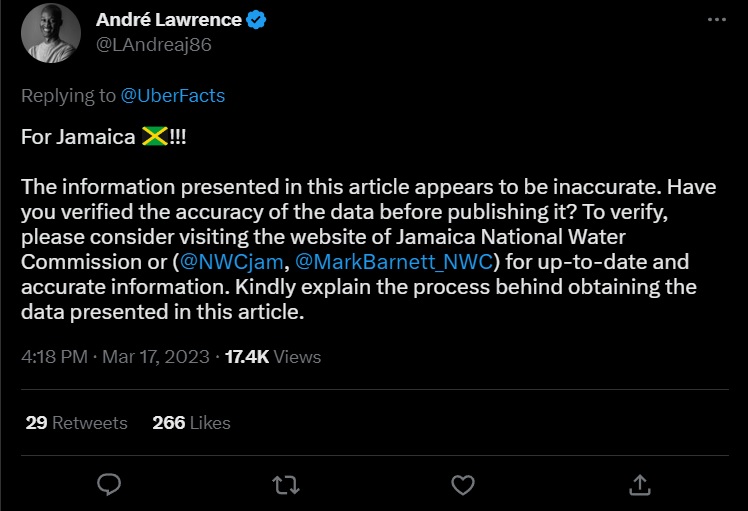
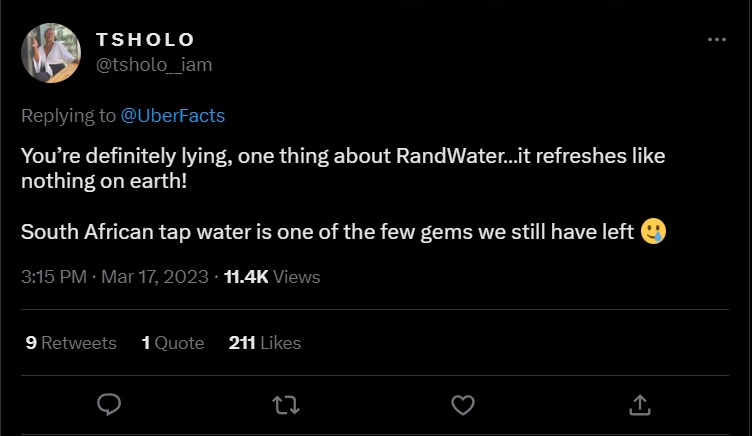
Meanwhile, Jamaican Twitter users felt that the ranking did not put into consideration that visiting cruiseliners willingly opt for local water to replenish their stores before sailing the open ocean and further disregarded the country’s consistency in best-taste competitions.
Others still labelled the entire ranking a racist as it seemingly highlighted rich, majority-white countries and disparaged Latin America, South Asia and Africa.
MORE REACTIONS:
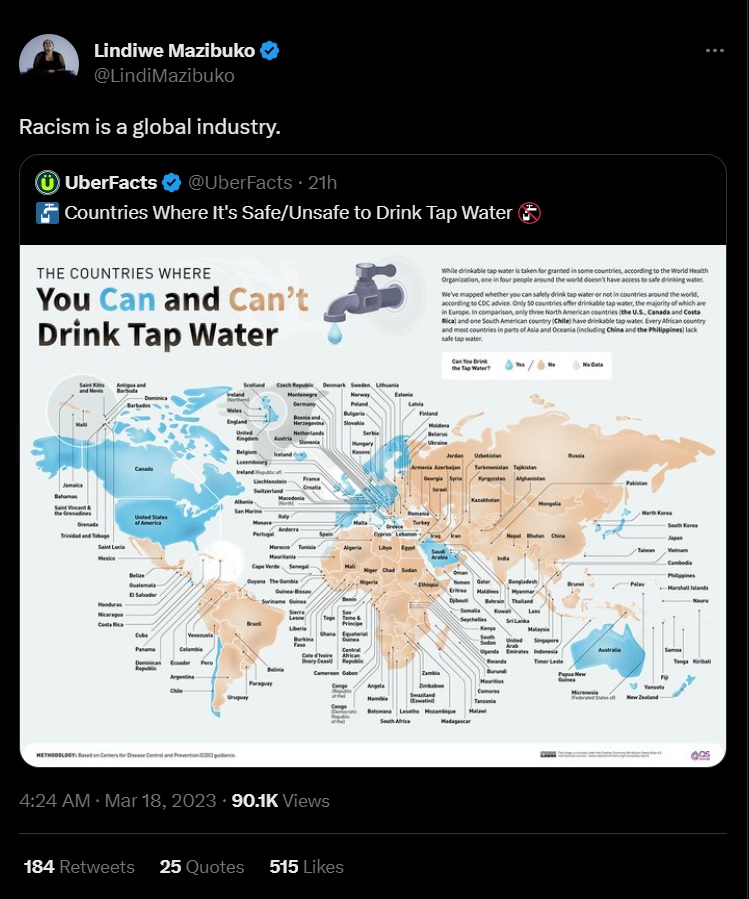
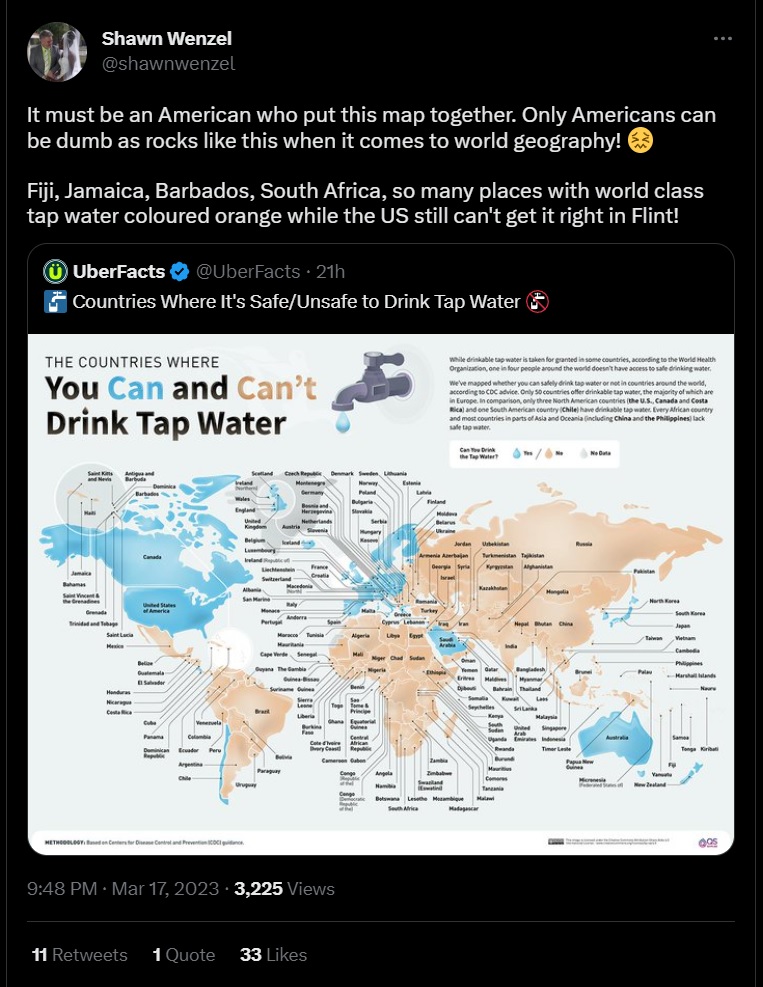
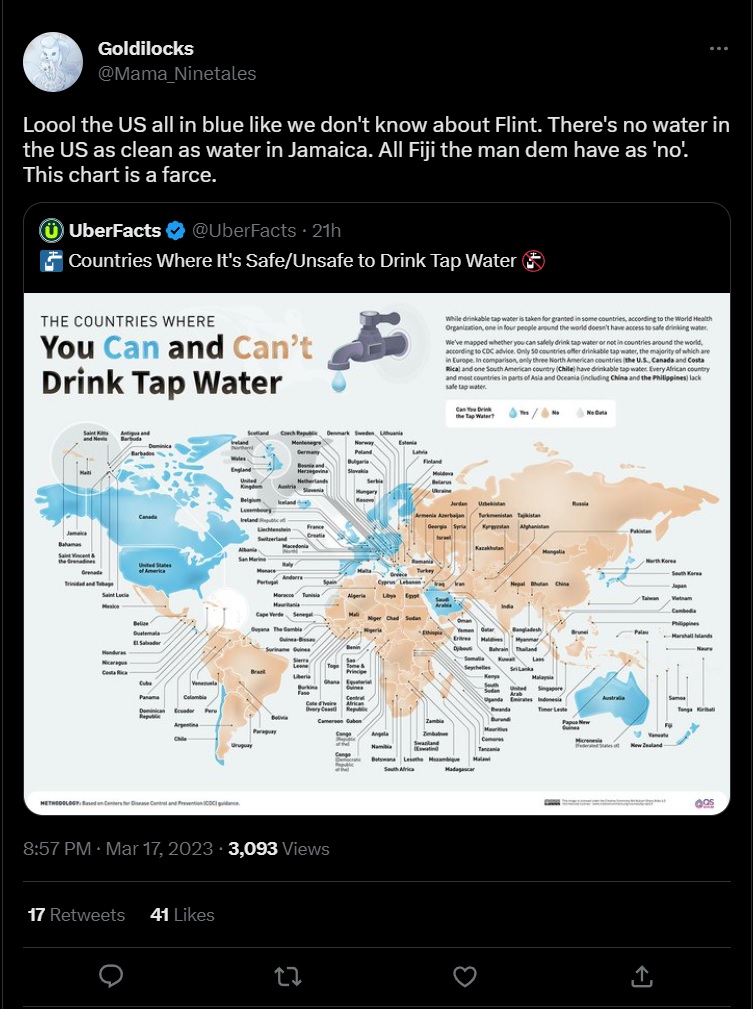
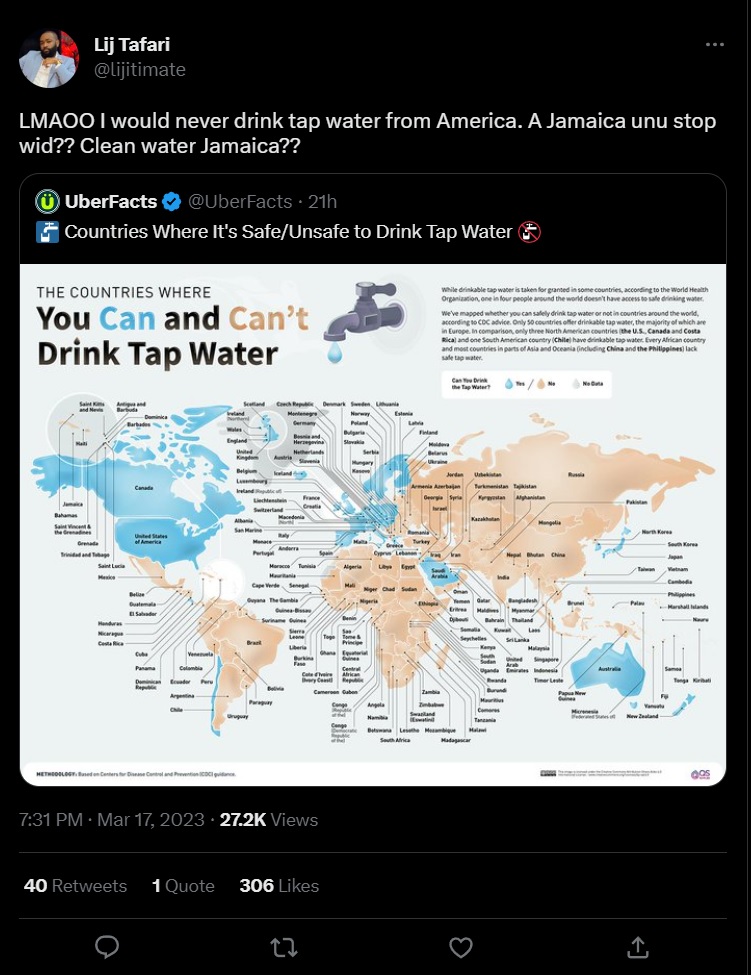
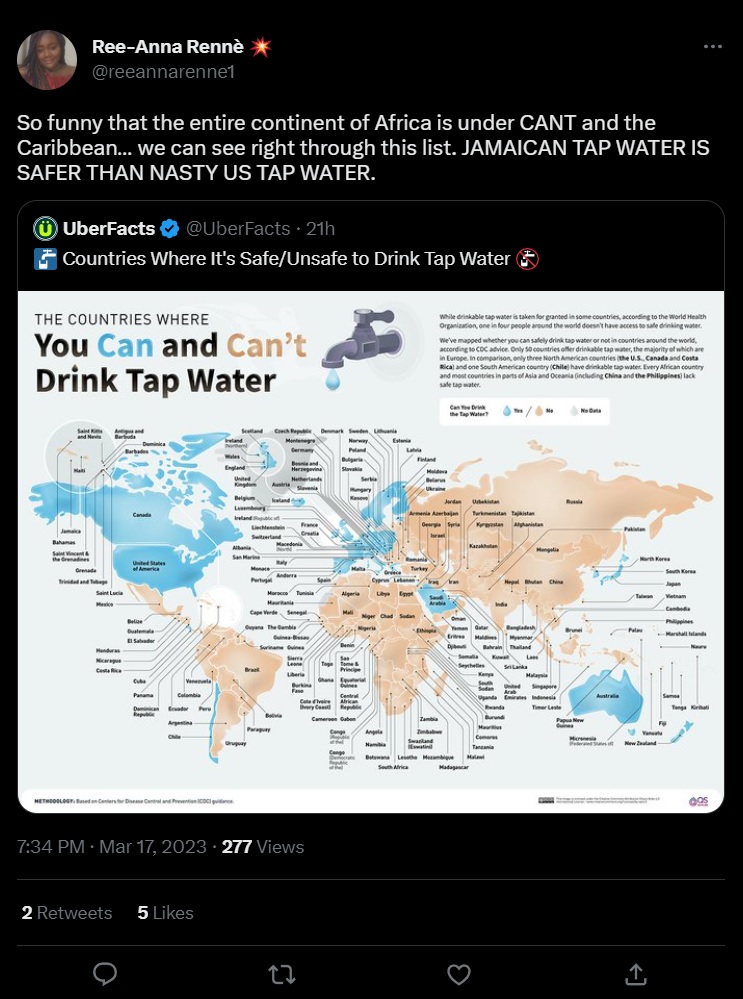
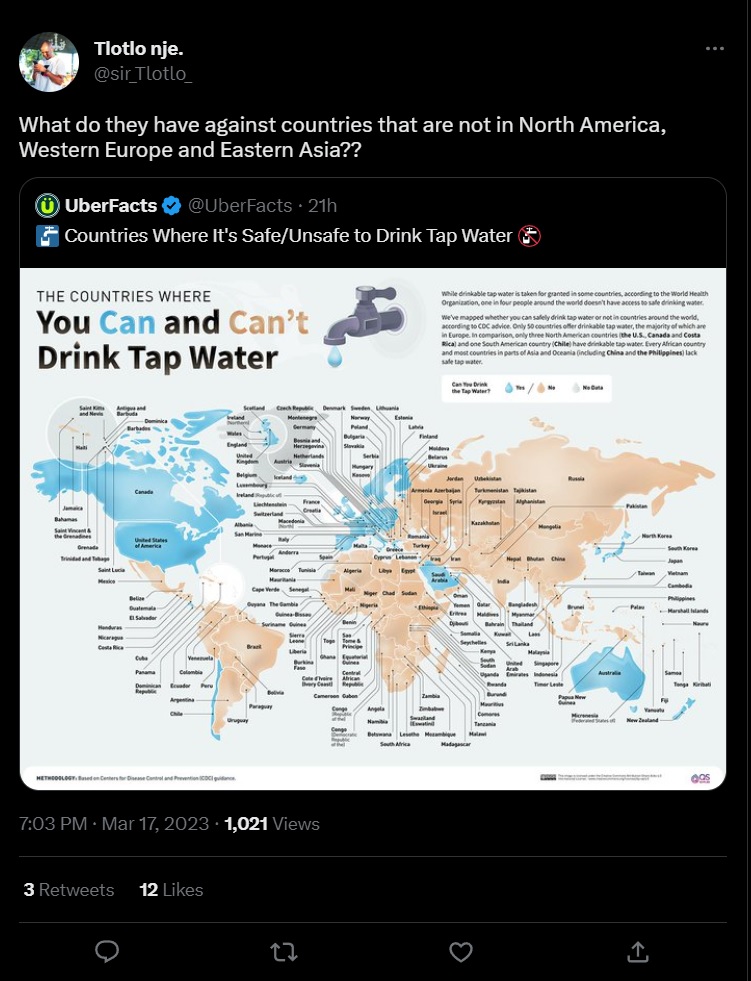
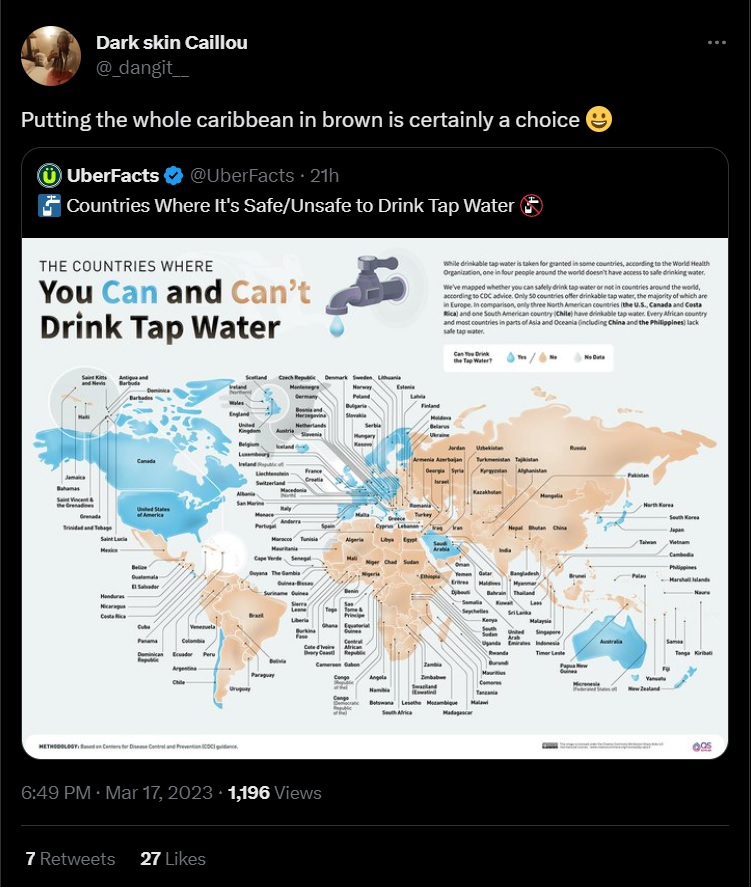

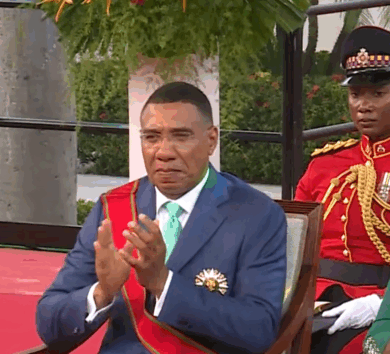
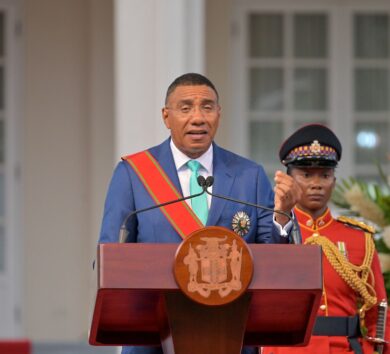
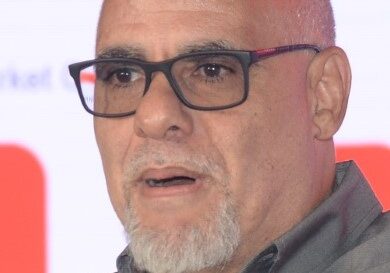


Comments